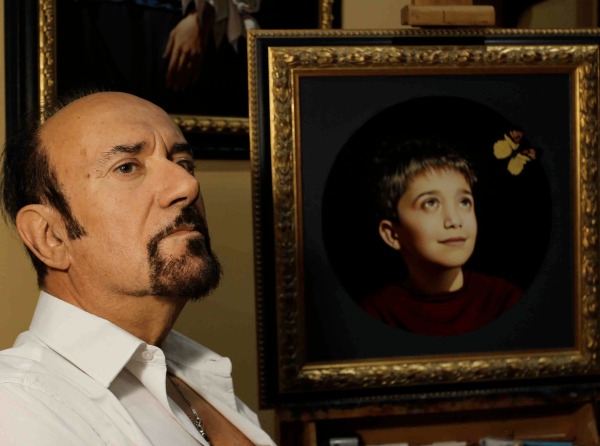Stefano Solimani: The Truth And The Beauty Of Painting
Painter native of Marche, now he has found his homeland in Umbria, in Spoleto. Solimani paints from 1967, as he keeps on underlining: “I have prepared my first personal to 14 years old”, he tells. “My mother dabbled in painting and, following her example, I have always drawn and painted. At school I was very good at artistic subjects and I also helped my classmates.” Young Stefano Solimani, even though he could not attend art school because his father did not approve, never stopped practicing and portrayed subjects, landscapes and objects from life, along with fantasy scenes. The artist explains: “Abstractionism has never attracted me; in recent times I have begun to include abstract and symbolic elements in my works, without ever forgetting formal beauty”. Beauty, never ends in itself but the result of research, is one of the themes that Stefano Solimani holds most dear. To the point of founding, in 2009, an artistic movement, Hyperesthetism: “In the twentieth century, currents were born according to which everything was allowed; for example, the Transavanguardia, which wanted to express itself as if it were starting from scratch”, says Solimani. “Hyperesthetism was born as an artistic revolution, a sort of new Renaissance that, on the one hand, opposes the excesses of these movements, and on the other, seeks beauty as a means of purification, of redemption.” Solimani carefully selects the artists who adhere to his manifesto: “They are unique characters,” he explains.

Stefano Solimani’s works are so close to the truth (another criterion the artist holds dear) that they look like photographs. Some have even doubted that he only uses a brush and have brought up digital manipulations. In this regard, Solimani recounts an episode in 2012, on the occasion of an exhibition at the Civic Museum of Bevagna (Perugia): “To dispel any rumors, I set up a painting studio and painted a still life in front of everyone, which I call silent nature. There is no longer the habit of seeing a person who paints with the techniques of the past”. Stefano Solimani’s works are made with oil paint glazes, reproducing subjects, people and things, illuminated with electric light. The artist explains: “I don’t work with natural light, which changes quickly. I create a set in which the characters play a role.” In his Silent Natures (“Still life has a sense of decomposition, I create silent natures,” explains the artist) sometimes there are symbolic objects or animals that make the atmosphere rarefied and metaphysical. Solimani says: “They are apparently incomprehensible elements, but they conceal a logic. They often concern religious themes and solicit doubt, at times recalling Platonic or Aristotelian concepts. Some time ago I exhibited in a diocesan museum and, although it was run by prelates with fairly important positions, no one noticed, at least apparently, the hidden contents of my paintings”. And he adds: “Maybe not everyone remembers, but to assign a painting to a church, even today you have to follow the canons of the sixteenth century, established after the Council of Trent”.

During the period of the pandemic, Stefano Solimani painted some works, among which “The war is over”, a painting that, according to the artist, reminds us how man has always fought a war against evil with unequal weapons, but in the end something from above intervenes to bring peace. And, for the exhibition “Troisi Poeta Massimo”, which ended in September 2021, Solimani exhibited “How a poem ends”, a portrait of the great Neapolitan actor Massimo Troisi as he points to the sky above us explaining the contemporary world to Leonardo Da Vinci, in one of the scenes from the film “Non ci resta che piangere”. After having seen the cancellation, due to the pandemic, of two important exhibitions in which he should have participated (planned for the anniversaries of Raphael in 2020 and Dante in 2021), Stefano Solimani is now in contact with the future Louvre museum in Abu Dhabi (United Arab Emirates), for the acquisition of some of his works for the permanent collection.
Media Contact
Company Name: The Art Insider
Contact Person: Letizia Riccio
Email: Send Email
Phone: +44 20 3290 3717
Country: United Kingdom
Website: www.art-insider.com




